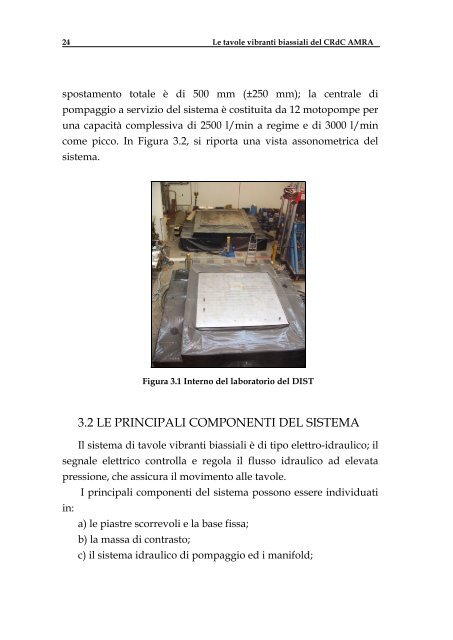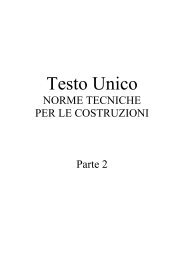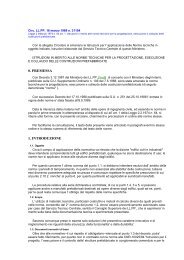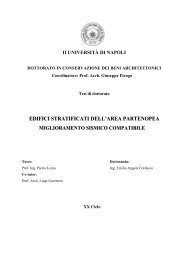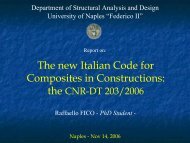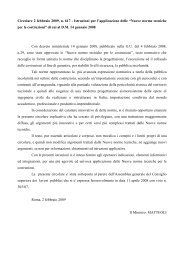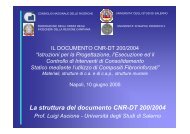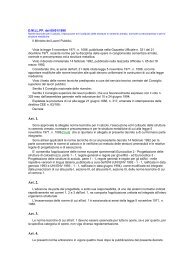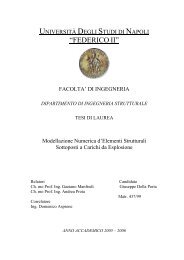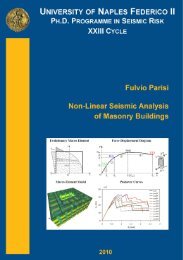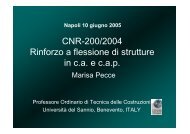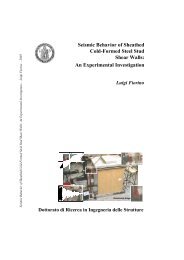Le tavole vibranti biassiali del CRdC-AMRA - Dipartimento di Analisi ...
Le tavole vibranti biassiali del CRdC-AMRA - Dipartimento di Analisi ...
Le tavole vibranti biassiali del CRdC-AMRA - Dipartimento di Analisi ...
You also want an ePaper? Increase the reach of your titles
YUMPU automatically turns print PDFs into web optimized ePapers that Google loves.
24 <strong>Le</strong> <strong>tavole</strong> <strong>vibranti</strong> <strong>biassiali</strong> <strong>del</strong> <strong>CRdC</strong> <strong>AMRA</strong><br />
spostamento totale è <strong>di</strong> 500 mm (±250 mm); la centrale <strong>di</strong><br />
pompaggio a servizio <strong>del</strong> sistema è costituita da 12 motopompe per<br />
una capacità complessiva <strong>di</strong> 2500 l/min a regime e <strong>di</strong> 3000 l/min<br />
come picco. In Figura 3.2, si riporta una vista assonometrica <strong>del</strong><br />
sistema.<br />
Figura 3.1 Interno <strong>del</strong> laboratorio <strong>del</strong> DIST<br />
3.2 LE PRINCIPALI COMPONENTI DEL SISTEMA<br />
Il sistema <strong>di</strong> <strong>tavole</strong> <strong>vibranti</strong> <strong>biassiali</strong> è <strong>di</strong> tipo elettro-idraulico; il<br />
segnale elettrico controlla e regola il flusso idraulico ad elevata<br />
pressione, che assicura il movimento alle <strong>tavole</strong>.<br />
I principali componenti <strong>del</strong> sistema possono essere in<strong>di</strong>viduati<br />
in:<br />
a) le piastre scorrevoli e la base fissa;<br />
b) la massa <strong>di</strong> contrasto;<br />
c) il sistema idraulico <strong>di</strong> pompaggio ed i manifold;


